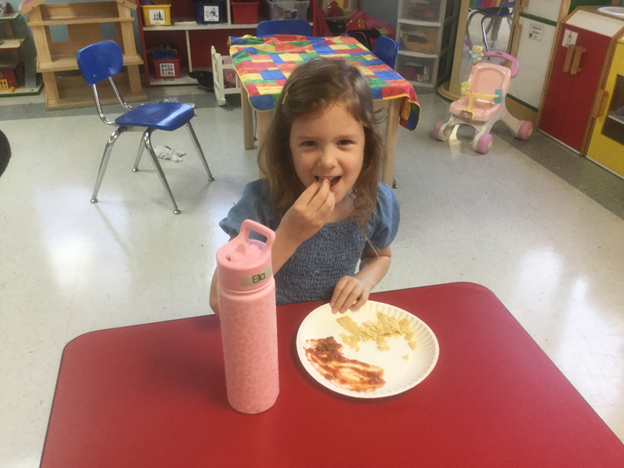
There’s something magical about preschool: the first taste of independence, new friends, and, of course, the communal lunch table.
It may seem far-fetched right now, but the foods your little one eats at three-year-old lunchtime can ripple all the way to their high-school cafeteria. Here’s why curating those tiny brown-bag meals is more prophetic and powerful than you think.
Flavor Foundations: The Building Blocks of Better Eaters
Early childhood is a critical window for shaping taste preferences. From around 6 months to 5 years old, kids are most open to new flavors and textures. Every pouch of puréed peas or mangos isn’t just sustenance, it’s a mini taste training session for their budding palates.
- Repetition is key: It can take 10–15 tries for a child to accept a new food.
- Variety beats vanilla: Offering diverse ingredients encourages adventurous eating later on.
- Positive associations: Eating with friends or siblings makes novel foods feel fun, not frightening.
By making sure your preschooler experiences a rainbow of flavors early, whether it’s tangy kimchi-inspired yogurt or a simple carrot-coriander soup, you’re setting them up to be confident, curious eaters down the road.
The Social Lunchroom Effect
Kids are social sponges. They watch what their friends eat, mimic their reactions, and proudly announce, “I love snails!” (true story). When they see peers chomping on something exotic, suddenly that broccoli floret or seaweed strip looks like the coolest thing in the world.
Why this matters:
- Peer pressure, but make it positive. Kids want to fit in, so if their best bud is devouring wasabi peas, they might just give them a go.
- Shared excitement. Eating together builds a sense of belonging; new foods become social currency.
- Confidence boost. Brave bites lead to bragging rights: “I tried Brussels sprouts!” which circles back to more willingness to experiment.
Ella’s Seaweed Story
Let me introduce you to my daughter, Ella (age 5). Last year, her preschool friend pulled out a snack that stopped Ella in her tracks: seaweed sheets. She crunched away like it was popcorn, and it piqued Ella’s food curiosity.
I’m not sure if it was the crunchy texture, the packaging, or the mere fact that her peer had something for lunch that she didn’t, but Ella came home that day asking, “Mom, I need seaweed in my lunch!” I’ll admit, I was skeptical she would like it, but I was also thrilled she wanted to try something out of her usual lunch repertoire. Now, we’ve stocked up on seaweed snacks, and it’s become a lunchbox staple.
This highlights a bigger truth: social interactions can turbocharge flavor exposure. When it’s not just Mom declaring, “Eat your greens,” but a best friend, the message resonates louder.
Translating Preschool Prophecy into Action
Want to recreate this lunchroom alchemy for your own mini me? Here are some tips:
- Curate a theme: Try “Mediterranean Monday” with hummus and olives, or “Tropical Tuesday” with mango cubes and plantain chips.
- Lunchbox swaps: Organize a once-a-month snack exchange with another family (swap recipes, too!).
- Include a “mystery bite”: Wrap a small portion of something new in foil. Let your child guess what it is before they eat it!
- Make it colorful: Vibrant colors signal variety, think purple sweet potato fries or rainbow carrot sticks.
- Join the table: Eat the same new item alongside them. Your enthusiasm is contagious.
By intentionally mixing up textures, tastes, and social contexts, you’re not only preventing picky-eater rebellions but also building the foundation for a teenager who’s unafraid to order the kimchi fries or sushi burrito in the school cafeteria.
The Long-Term Payoff
Fast-forward 10 years: Your high-schooler strides into lunch, eyes scanning the table. Instead of hesitating at any lunch besides pizza or a turkey sandwich, they confidently pile up their plate with better, more flavorful options (and just maybe a side of seaweed strips). They chat freely with classmates about flavor combinations, swapping snack recommendations like trading baseball cards. And to think it all started in the preschool classroom.
When you invest a little extra thought into those early lunches; leveraging both nutritional smarts and peer dynamics, you’re writing a “preschool prophecy” that foretells a future of happy, adventurous eaters.
Taste Training™: Your Child’s Flavor Curriculum
By now you’ve seen how peer-powered snack swaps and a rainbow-packed lunchbox can work wonders, but let’s get even more intentional about it with our Taste Training™ program. Think of Taste Training™ as your child’s personalized flavor curriculum, designed to guide little palates toward lifelong adventurous eating just like how you’d follow a syllabus for sleep or potty training.
Ready to make every lunchbox a stepping stone toward an adventurous eater? Check out our Taste Training™ Bundles; Voyager, Explorer, and Globetrotter and start your little one’s flavor journey today!
